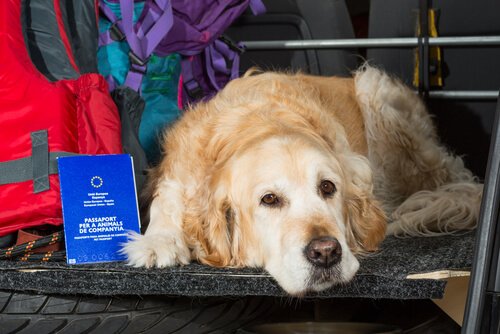European Rules For Traveling With Your Pet

When it comes to traveling with your pet in Europe there are a few documents that you need to have in order to avoid problems with the authorities.
Traveling with your pet, the benefits of the Schengen area
One of the main advantages of living in the European Union is that citizens can travel to other European countries without having to go through physical borders. It’s called the Schengen area and it consists of 26 countries. You just need a valid passport to travel easily throughout these European countries.
With animals, this privilege also applies to animals. There are no chihuahua-sized booths or border crossings. However, just like with people, there are a number of documents that every pet owner will need if you want to take them with you in the Schengen area.

What should you do if you want to travel from a country outside the EU?
In some parts of the world, traveling with your pet requires a series of veterinary visits and certificates which guarantee your animals health, among other things. In the EU, you need the following documents in order to take your dog to one of the 28 member states:
- Although many dog owners now opt for a microchip, it’s mandatory for them to travel within the EU. The only requirement is that they be readable by a standard microchip reader.
- The rabies vaccine is also mandatory. In Europe, it’s not so unusual for an animal to contract this disease. Therefore, you will need to vaccinate your pet at least 21 days before arriving in Europe. It’s also worth mentioning that your animal’s microchip will need to be implanted before the vaccine. Also, the vaccine cannot be administered when your pet is less than 12 weeks old. Therefore, puppies of a young age don’t need to be vaccinated.
- Once you’ve vaccinated your pet against rabies you next need to run a blood test. This is to check that their antibodies levels are high enough. This test should be done at least 30 days after your pet has been vaccinated and three months before arriving in Europe. As you can see, travelling in the EU with an animal from outside the union requires a certain level of preparation and documentation.

Other requirements
- Along with all of these steps, you need to have a certificate of health. You can get this from an accredited vet and it guarantees that your pet has no infectious diseases, is vaccinated against rabies, and is OK to travel. This document is essential for traveling with your pet.
- If you are planning on staying for more than four months, your pet will need a valid pet passport. This document is regulated by Commission Implementing Regulation (EU) No. 577/2018. It’s also necessary for owners who were born in a member country and want to travel within the EU. You can get one from an authorised vet.
- If you want to take your dog to Malta, Ireland, Finland, or the United Kingdom, they also require a vaccination against the Echinococcus multilocularis parasite. This can be performed by a vet between 24 and 120 hours before traveling to the European country you want to go to.